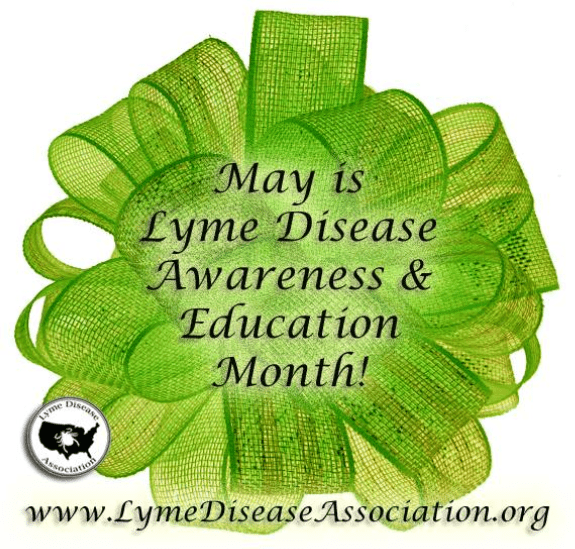Lyme Disease Awareness

Ann Rissman,
Health Educator, Environmental Planner
La Porte Office
809 State Street, Suite 401A
La Porte, IN 46350
Phone (LP): 219-326-6808 Ext. 2200
Phone (MC): 219-874-5611 Ext. 2200
After Hours: 219-326-6808 Ext. 8410
Fax: 219-325-8628
Michigan City Office
302 West 8th St. Suite 4
Michigan City, IN 46360
Phone: 219-874-5611 Ext. 7780
Fax: 219-873-3018
Now offering free blood draw for Lyme panel testing utilizing IGeneX laboratory on FRIDAYS only. See www.igenex.com for more information. Free test kits are available at the LPCHD fourth floor County complex. Call x2429 for an appointment.
The La Porte County Health Department water testing laboratory offers a FREE blood draw for the public wanting to test themselves for Lyme disease and the co-infections associated with Lyme. However, the testing will not be free of charge, testing starts at $210. The laboratory does not bill insurance, but will bill Medicare.
Individuals wanting to be tested need to make an appointment at the LPCHD La Porte Office on Fridays ONLY.
The blood will be sent to IgeneX Laboratories, 795 San Antonio Rd. – Palo Alto, CA 94303. www.igenex.com
From IgeneX’s website:
“IGeneX, Inc. is a specialty immunology laboratory and research facility, providing personalized service to over 1,000 private practice physicians, hospitals, and other clinical reference laboratories throughout the U.S. and Canada. The laboratory also functions as a pilot site for diagnostic manufacturers in the introduction of new assays, and has extensive collaborative agreements with multiple research groups.
The Reference Laboratory, founded in 1983, was purchased from 3M Diagnostic Systems (3MDS-Santa Clara, CA and BioWhittaker, Inc., Walkersville, MD) in 1991 by IGeneX, Inc. and moved to Palo Alto, California.
The laboratory is CLIA-certified, inspected by the Department of Health and Human Services for Medicare testing. We are also licensed in those states with special requirements (California, Florida, Maryland, New York, and Pennsylvania). All other states accept CMS licensure. See the QA Package for description of our certifications, validation protocols, and quality assurance practices.”
The LPCHD Health Officer, Dr. Sandra Deausy, MD, will be the ordering physician for these tests, however, she will not be responsible for treatment or diagnosis of any patient. Test results will be sent to patient’s family doctor, and kept on file at the LPCHD.
Lyme Disease Facts
- Lyme disease is caused by a spiral-shaped bacteria (spirochete) called Borrelia Burgdorferi. The Lyme spirochete can cause infection of multiple organs and produce a wide range of symptoms. Case reports in the medical literature document the protean manifestations of Lyme disease, and familiarity with its varied presentations is key to recognizing disseminated disease.
- Fewer than 50% of patients with Lyme disease recall a tick bite. In some studies this number is as low as 15% in culture-proven infection with the Lyme spirochete.
- Fewer than 50% of patients with Lyme disease recall any rash. Although the erythema migrans (EM) or “bull’s-eye” rash is considered classic, it is not the most common dermatologic manifestation of early-localized Lyme infection. Atypical forms of this rash are seen far more commonly. It is important to know that the EM rash is pathognomonic of Lyme disease and requires no further verification prior to starting an appropriate course of antibiotic therapy.
- The elisa screening test is unreliable. The test misses 35% of culture proven Lyme disease (only 65% sensitivity) and is unacceptable as the first step of a two-step screening protocol. By definition, a screening test should have at least 95% sensitivity.
- The Centers For Disease Control And Prevention (CDC) surveillance criteria for Lyme disease were devised to track a narrow band of cases for epidemiologic purposes. As stated on the CDC website, the surveillance criteria were never intended to be used as diagnostic criteria, nor were they meant to define the entire scope of Lyme disease.
- Of patients with acute culture-proven Lyme disease, 20–30% remain seronegative on serial western blot sampling. Antibody titers also appear to decline over time; thus while the western blot may remain positive for months, it may not always be sensitive enough to detect chronic infection with the Lyme spirochete. For “epidemiological purposes” the CDC eliminated from the western blot analysis the reading of bands 31 and 34. These bands are so specific to Borrelia Burgdorferi that they were chosen for vaccine development. Since a vaccine for Lyme disease is currently unavailable, however, a positive 31 or 34 band is highly indicative of Borrelia Burgdorferi exposure. Yet these bands are not reported in commercial Lyme tests.
- When used as part of a diagnostic evaluation for Lyme disease, the western blot should be performed by a laboratory that reads and reports all of the bands related to Borrelia Burgdorferi. Laboratories that use FDA approved kits (for instance, the mardx marblot®) are restricted from reporting all of the bands, as they must abide by the rules of the manufacturer. These rules are set up in accordance with the CDC’s surveillance criteria and increase the risk of false-negative results. The commercial kits may be useful for surveillance purposes, but they offer too little information to be useful in patient management.
- There are 5 subspecies of Borrelia Burgdorferi, over 100 strains in the us, and 300 strains worldwide. This diversity is thought to contribute to the antigenic variability of the spirochete and its ability to evade the immune system and antibiotic therapy, leading to chronic infection.
- A preponderance of evidence indicates that active ongoing spirochetal infection with or without other tick-borne infections is the cause of the persistent symptoms in chronic Lyme disease.*
* taken from illiads.org (International Lyme and Associated Disease Society)
